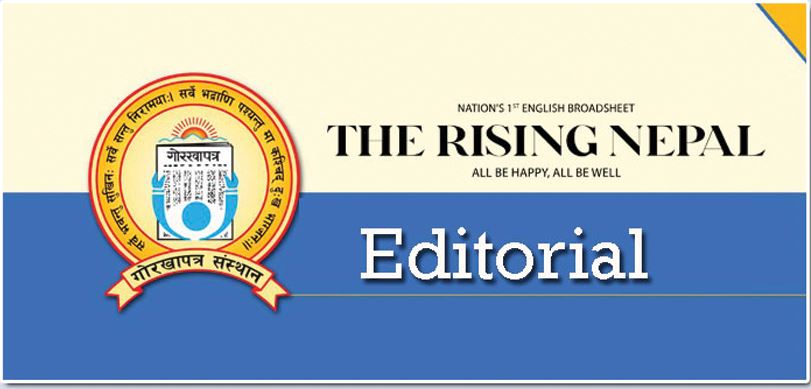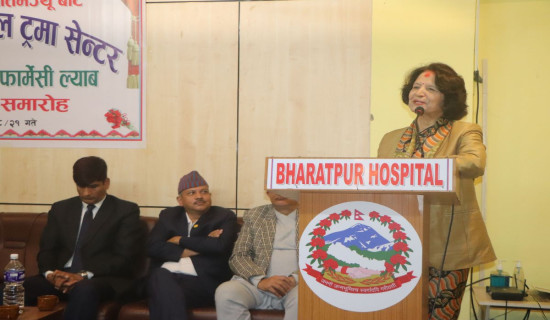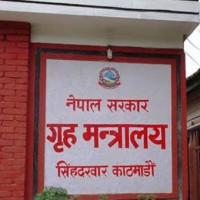- Sunday, 7 December 2025
Disaster Readiness
Every year, the monsoon season appears with a familiar scene of submerged settlements, flooded streets, and desperate rescues in hills and plains. The recent flood in Kailali, Dhangadhi, and Kanchanpur districts, displacing many settlements and rendering hundreds of houses uninhabitable, shows the nation's continued vulnerability to heavy rains, floods, and landslides. As with each annual recurrence of these disasters, suffering persists, underscoring an imperative need for greater preparedness, awareness, and vigilance. Flooding and landslides are nothing new to Nepal. Tarai and hill people endure these risks yearly, as the monsoon rains often inundate poor drainage and encroached waterways. The situation is recurring: heavy rains unleash floods, homes are left homeless, emergency rescues are initiated, and life is back to normal. However, the authorities are often caught napping, and poor coordination, outdated facilities, and planning hamper disaster mitigation.
It would be unfair not to note the progress achieved. The government has started institutionalising disaster readiness, enhancing early warning systems, and creating multi-hazard preparation plans to mitigate the possible threat. With the help of international agencies, the government has implemented anticipatory action plans to provide life-saving assistance and early warnings to vulnerable communities. With the rescue and relief activities coordinated through local disaster committees, many lives have been saved. But still, these interventions are patchy. Due to the unmanaged drainage system, poor town planning and perpetual encroachment into natural waterways, even moderate rain has become a disaster. While early warning systems are rising, their societal coverage and effect are still limited. There is no robust, year-round preparedness planning, so each monsoon season poses a new crisis rather than a managed risk.
The community must continuously strive for readiness, rather than reacting hastily. Public information campaigns on flood and landslide risks, evacuation procedures, and low-cost safety measures are necessary. Local authorities must invest in resilient infrastructure, support zoning laws, and restore natural water flows. Early warning messages must be accessible, timely, and actionable to all, especially the most vulnerable. Preparedness is not just the responsibility of authorities. Communities must be empowered to monitor local conditions, report hazards, and participate in disaster simulation drills. Schools, businesses, and households must ingrain preparedness as a culture during the monsoon season.
Nepal's fragile geology and shifting pattern in rainfall often trigger floods and landslides, posing a threat to life and property. The government should break the disaster-response cycle by prioritising preparedness, investing in resilient infrastructure, and promoting a culture of vigilance. The readiness today and always means resilience over destruction at any time. Government agencies can improve early flood and landslide warning systems by combining sophisticated technologies such as real-time monitoring, remote sensing, and machine learning with effective community involvement and participatory communication strategies, such as timely and precise warnings to even the most vulnerable segments of society.
Improvement in coordination among national, provincial, and local institutions, conducting regular community drills, and relying on local knowledge in combination with scientific data further enhance preparedness and response. Through a structured integration of local involvement, technological ingenuity, and good governance, early warning systems can better protect lives and reduce the effects of disasters.
















